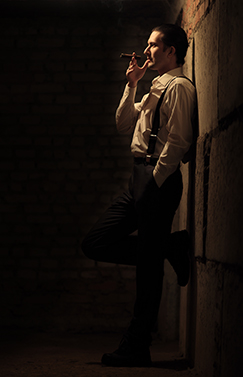
The birth of a new Italian industry – cigar-making
Christopher Columbus may have discovered tobacco on his travels to the Caribbean in 1492...
Christopher Columbus may have discovered tobacco on his travels to the Caribbean in 1492, but it wasn’t until the mid 18th Century that the cigar as we know it appeared.
The Cuban Indians traditionally smoked tobacco by rolling the dried leaves up in palm or plantain leaves. It was a habit adopted by sailors, but when Jean Nicot, French ambassador to Portugal took up the habit, believing it to have medicinal qualities, Europe’s aristocrats started to take interest.
At first people kept dried tobacco in snuff boxes and used it in pipes. But when the Spanish, inspired by the Cubans, started making cigars in 1717, the trend soon caught on.
Following requests from the people of Valstagna, Oliero, Campolongo, Valrovina Campese and Bassano del Grappa, the Republic of Venice granted the rights to grow Nostrano tobacco, the type popular at the time and smoked in the courts of the Doges of Venice. The cultivation on the banks of the Brenta was such a success that generations of families came to prosper from it. In fact, during times of economic uncertainty, it was one of their only sources of income.
As the popularity of cigars in Europe increased, people began to demand better quality and Seville lost some of its dominance to imports from Cuba. It was around this time that Ferdinand III, the Grand Duke of Tuscany made his lucky discovery – that Kentucky tobacco leaves, given the chance to ferment, make a far superior cigar, with richer flavours for a more intense experience. As a result, the cigars made by Manifatture Sigaro Toscano have gone on to set the standard for just how good an Italian cigar can be.
The Cuban Indians traditionally smoked tobacco by rolling the dried leaves up in palm or plantain leaves. It was a habit adopted by sailors, but when Jean Nicot, French ambassador to Portugal took up the habit, believing it to have medicinal qualities, Europe’s aristocrats started to take interest.
At first people kept dried tobacco in snuff boxes and used it in pipes. But when the Spanish, inspired by the Cubans, started making cigars in 1717, the trend soon caught on.
Following requests from the people of Valstagna, Oliero, Campolongo, Valrovina Campese and Bassano del Grappa, the Republic of Venice granted the rights to grow Nostrano tobacco, the type popular at the time and smoked in the courts of the Doges of Venice. The cultivation on the banks of the Brenta was such a success that generations of families came to prosper from it. In fact, during times of economic uncertainty, it was one of their only sources of income.
As the popularity of cigars in Europe increased, people began to demand better quality and Seville lost some of its dominance to imports from Cuba. It was around this time that Ferdinand III, the Grand Duke of Tuscany made his lucky discovery – that Kentucky tobacco leaves, given the chance to ferment, make a far superior cigar, with richer flavours for a more intense experience. As a result, the cigars made by Manifatture Sigaro Toscano have gone on to set the standard for just how good an Italian cigar can be.
More stories
- A special way to bring in the new year
- Cigars on the silver screen
- Cigars in song
- You don’t need alcohol to find a great match
- Slow burners and page-turners
- Ciccare – the less refined way to enjoy tobacco
- Ciccare – the less refined way to enjoy tobacco
- Hot off the press – how cigars made the news
- The ‘do it yourself’ humidor
- See a cigar in a whole new light
Discover more about Toscano cigar on www.toscanocigars.com
or www.miamicigar.com
